Exploring the hidden corners of North America’s diverse wildlife can sometimes feel like discovering a whole new world. While everyone’s heard of the mighty grizzly bear or the iconic bald eagle, there are plenty of other mammals roaming the continent that might surprise you.
1. The Mysterious Manatee In Freshwater
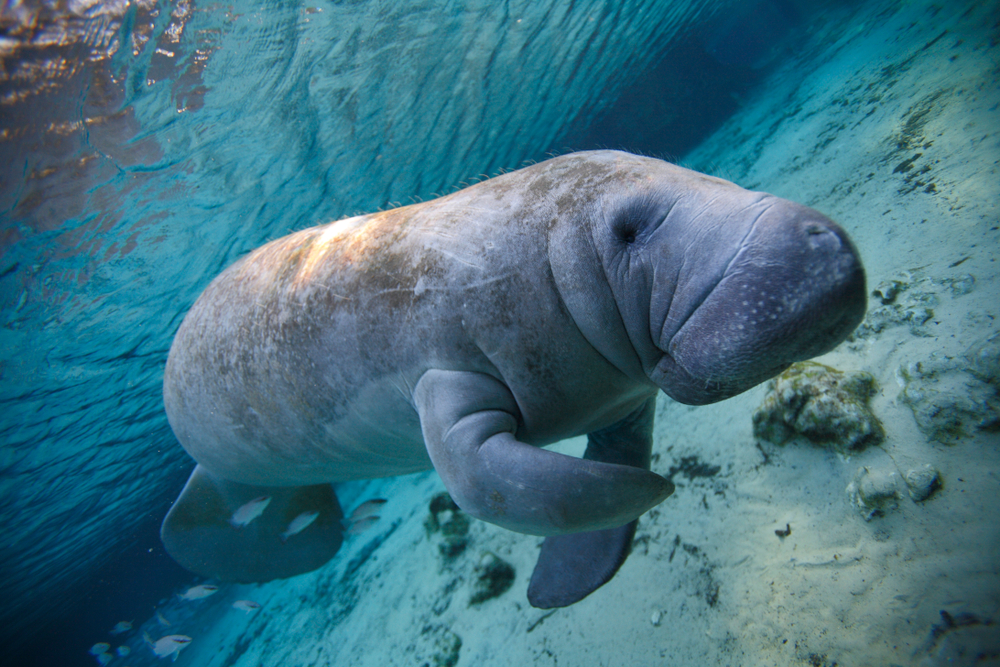
Surprisingly, North America’s freshwater systems are home to a rare type of manatee that’s often overlooked. These gentle giants, usually associated with the warm coastal waters of Florida, occasionally wander into inland rivers and lakes, seeking warmth during unexpected cold snaps. According to the Florida Fish and Wildlife Conservation Commission, these hefty mammals can weigh up to 1,200 pounds but are as gentle as they come. Spotting one in a freshwater lake is like finding a unicorn—it’s rare, magical, and leaves you with a story you’ll tell for years. Imagine lazily paddling down a river, only to find a manatee curiously peeking up at you. It’s a reminder that sometimes the most unexpected creatures share our world, often just outside our perception.
The presence of manatees in freshwater systems highlights the adaptability and resilience of these creatures. They’re often seen munching on aquatic plants, playing a crucial role in maintaining the health of their ecosystems. Despite their size, manatees are surprisingly agile in water, moving with the kind of grace that belies their bulk. Their journey into freshwater is not just a testament to their adaptability but also a call to protect these gentle giants from threats like boat collisions and habitat loss. So next time you find yourself near a warm-water source, keep an eye out for these elusive visitors. You never know when a freshwater manatee might be paddling leisurely nearby.
2. The Elusive Eastern Spotted Skunk
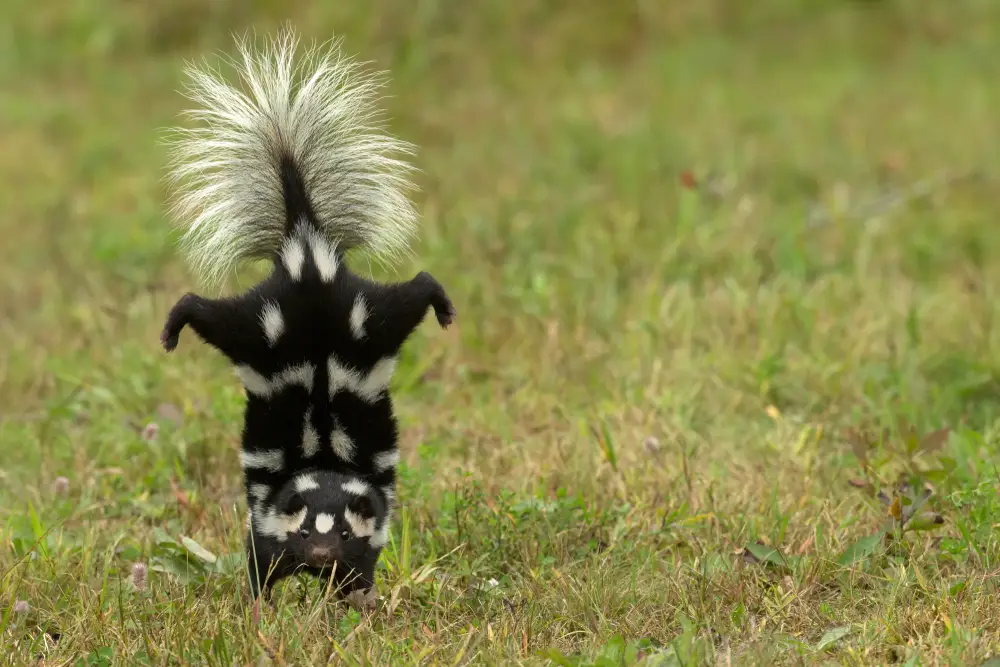
When you think of skunks, the black-and-white striped variety probably springs to mind. But the eastern spotted skunk is a whole different story! This small, agile predator is adorned with a distinctive pattern of white spots and stripes, making it look more like a tiny masked bandit than its better-known cousin. Found in parts of the Midwest and southeastern United States, these creatures prefer a diet of insects and small mammals. The Virginia Department of Wildlife Resources notes that they’re secretive by nature, often inhabiting wooded areas where they can forage under the cover of night. Spotting one is a rare treat, as their population has been declining due to habitat loss and changing agricultural practices.
The eastern spotted skunk is not just fascinating for its looks but also for its behavior. Unlike its more common relatives, this skunk can perform a “handstand” display when threatened, standing on its forelimbs to appear larger and more intimidating. It’s a unique defense mechanism that’s both entertaining and effective. Conservation efforts are crucial to ensure these quirky creatures continue to thrive in their natural habitats. Protecting their wooded homes and limiting pesticide use can help preserve their delicate ecosystems. So, next time you’re wandering through a forest, keep your eyes peeled for these little nocturnal acrobats.
3. The Enigmatic American Marten
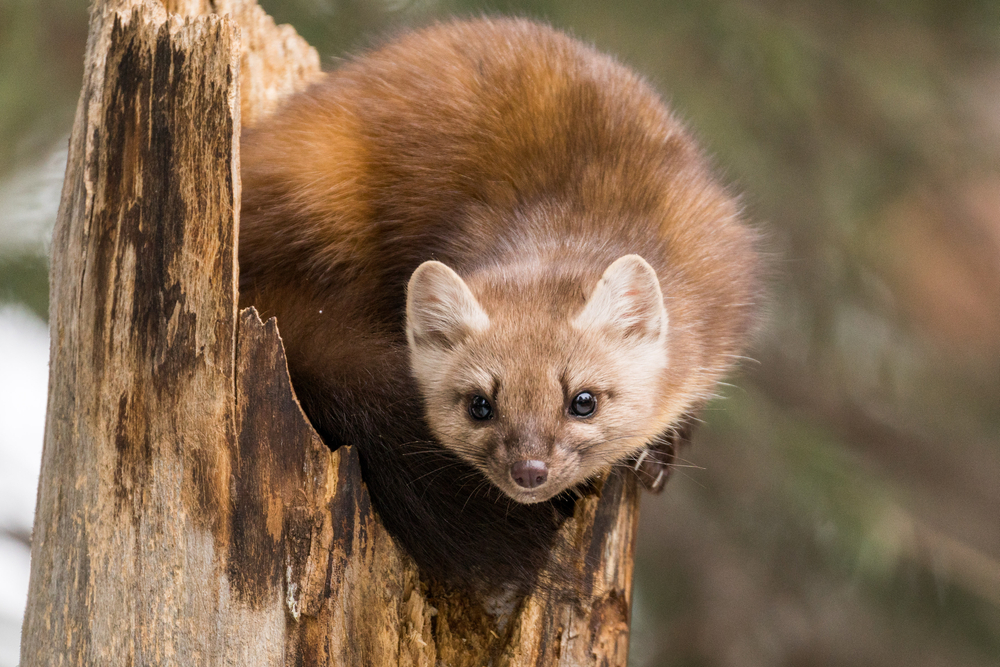
Roaming the dense forests from Alaska to the northern Rockies, the American marten is a creature of mystery and intrigue. This elusive member of the weasel family, with its slender body and bushy tail, is adapted to a life high up in the treetops. Its habitat spans across the boreal forests, where it spends its days expertly navigating branches in search of small mammals and birds. As reported by the Animal Diversity Web, spotting an American marten is no easy feat, as their camouflaged fur and quick movements make them experts at disappearing into the forest canopy. However, their presence is vital for maintaining the ecological balance within their environments.
American martens play a critical role as both predator and prey, impacting populations of species such as rodents, birds, and even fungi that rely on them for dispersal. Their survival is closely tied to the health of their forest environments, making them an important indicator of ecosystem well-being. Conservation efforts aimed at protecting old-growth forests are essential for the continued survival of these enigmatic creatures. If you ever find yourself hiking in the northern wilderness, remember that you’re walking through the domain of the elusive American marten—a master of its arboreal realm.
4. The Secretive Northern Hairy-Nosed Wombat
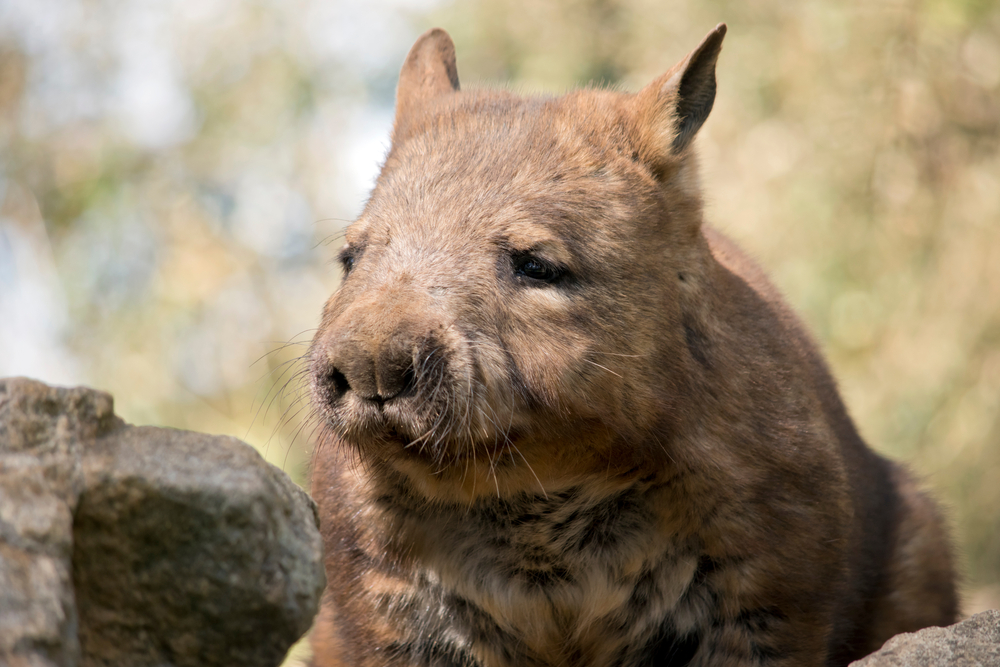
Although commonly associated with Australia, the northern hairy-nosed wombat has an unexpected North American cousin—well, sort of. Known as the North American wombat, this term is more of a nickname for a rare species of burrowing rodent that bears a striking resemblance to its Australian namesake. Found in isolated pockets of the arid Southwest, this creature is a master of disguise, blending seamlessly into its desert home. With a round body and a penchant for nocturnal adventures, spotting one is a rare occurrence. Their burrows are often deep and complex, providing shelter from the harsh desert climate.
These desert “wombats” play a crucial role in their ecosystems, aerating the soil and providing habitats for other species. Their digging activities help to improve soil health, which benefits plant growth and supports a diverse array of life. Despite their important ecological role, these elusive creatures face threats from habitat destruction and climate change. Protecting their arid homes is essential for their continued survival. So, next time you’re wandering through a desert landscape, remember that there’s more than meets the eye—hidden beneath the surface may be the intricate world of the North American wombat.
5. The Ghostly White Bison
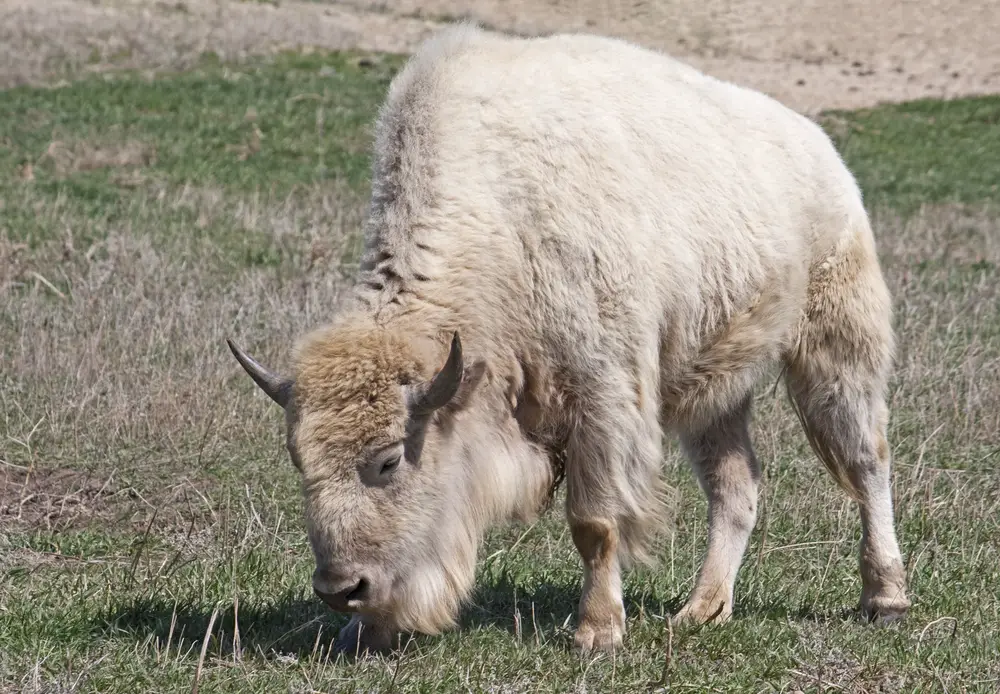
The iconic image of the North American plains often includes herds of bison grazing on wide-open grasslands. But among these giants is an even rarer sight: the white bison, a creature steeped in legend and spiritual significance for many Indigenous peoples. Known as symbols of hope and renewal, these rare animals are not albino but rather leucistic, meaning they have reduced pigmentation. Their striking white coats stand out against the prairies, making them both a breathtaking sight and a powerful symbol. The birth of a white bison is considered a sacred event, drawing attention from people near and far.
White bison play an important cultural role, serving as a reminder of the deep connections between people and nature. For many Native American tribes, these animals are seen as a gift from the Great Spirit, carrying messages of unity, peace, and harmony. Conservation efforts to protect bison herds help ensure the continuation of this rich cultural heritage. By supporting sustainable practices and respecting Indigenous traditions, we can help preserve the legacy of these magnificent creatures. Keep your eyes on the horizon next time you visit the plains—you might just catch a glimpse of this living legend.
6. The Stealthy Ocelot Of The South
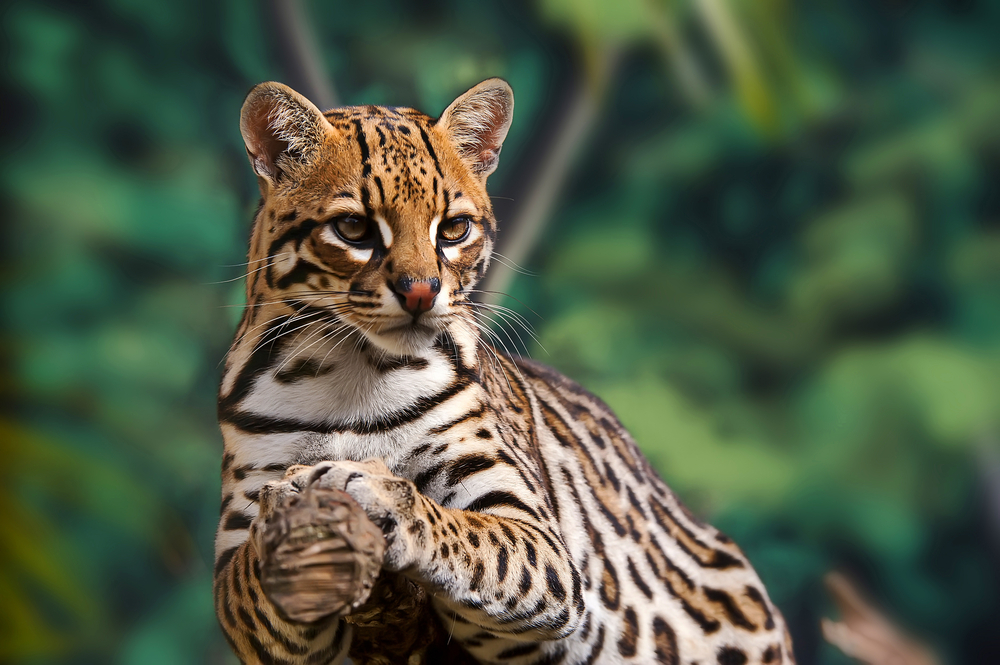
While most might associate the ocelot with the dense jungles of Central and South America, these spotted felines have also made their home in the southernmost reaches of the United States. Ranging from South Texas to parts of Arizona, the elusive ocelot is a master of stealth and camouflage. With its striking coat of black spots and rosettes, the ocelot blends seamlessly into the dappled shadows of its brushy habitat. These nocturnal predators are incredibly skilled hunters, preying on small mammals, birds, and reptiles with unmatched precision. Catching a glimpse of an ocelot in the wild is a rare and precious experience.
The presence of ocelots in the United States is a testament to their adaptability and resilience. However, their populations are under threat due to habitat loss from agricultural expansion and urban development. Conservation efforts are crucial to protect the dense thickets and brushlands these cats call home. Initiatives to preserve and restore natural habitats are essential for the survival of the ocelot in North America. Next time you’re exploring the wild landscapes of the South, remember that the stealthy ocelot might just be watching you from the shadows.
7. The Unseen Flying Squirrel Of The Night
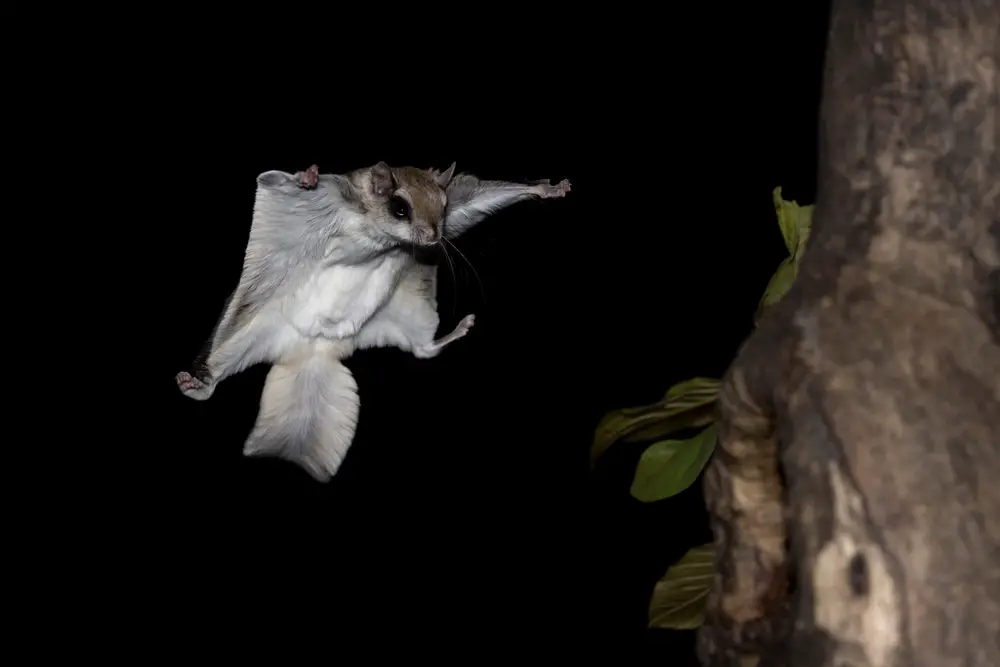
When the sun sets and the stars come out, the forests of North America come alive with activity, including the silent, graceful flight of the flying squirrel. These nocturnal gliders, with their large eyes and soft, furry membranes, can glide significant distances between trees, making them masters of the night sky. Found in forests from the southern United States to Canada, these squirrels are a vital part of their ecosystems, helping to disperse seeds and fungi as they foray through the treetops. Despite their name, flying squirrels don’t actually fly—they glide with remarkable precision, using their tails as rudders to steer.
Flying squirrels are difficult to spot, as their nocturnal habits and silent movements keep them hidden from sight. However, their presence is often betrayed by the faint rustling in the treetops or the soft chirping sounds they use to communicate. These enchanting creatures are an integral part of forest ecosystems, acting as pollinators and seed dispersers. Conservation efforts to protect forests and preserve natural habitats are crucial for the survival of these captivating gliders. Next time you’re camping under the stars, take a moment to look up and you might catch a glimpse of these aerial acrobats in action.
8. The Secretive Red Wolf Of The Southeast
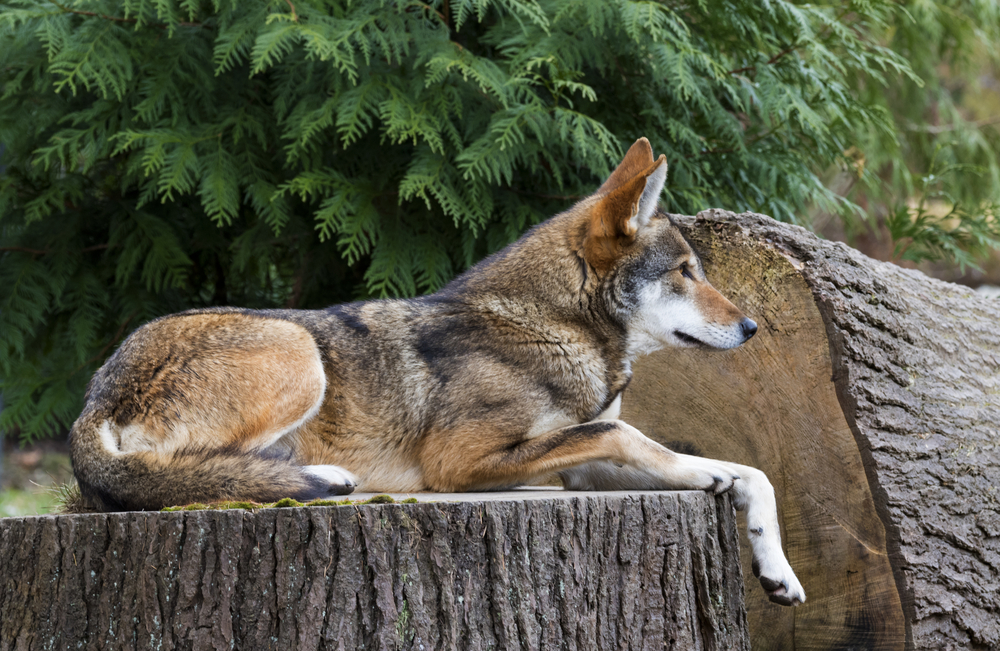
In the southeastern United States, a rare and resilient predator silently roams the swamps and woodlands—the red wolf. Once widespread across the region, this elusive canid has faced near extinction due to habitat loss and hybridization with coyotes. Today, their population is limited to a small area in North Carolina, where conservation efforts are underway to protect these magnificent creatures. With their reddish-tan coats and distinctive facial markings, red wolves are uniquely adapted to their environment, using their keen senses and agility to hunt small mammals and deer. Spotting a red wolf in the wild is an awe-inspiring experience, akin to encountering a ghost from the past.
The survival of the red wolf is a critical conservation priority, as these animals play a vital role in maintaining the balance of their ecosystems. As apex predators, they help regulate populations of smaller animals, ensuring the health and diversity of their habitats. Efforts to protect and restore red wolf populations involve habitat preservation, breeding programs, and community engagement to raise awareness about the importance of these majestic creatures. If you ever find yourself exploring the wilds of North Carolina, keep your senses sharp—you may just be lucky enough to witness the rare and mysterious red wolf in its natural habitat.
9. The Enchanting Northern Pika

In the high alpine meadows and rocky slopes of the northern Rockies, a small, round creature scurries among the boulders—the northern pika. These adorable mammals are closely related to rabbits and are known for their distinctive “eeep” calls, which echo across the mountains. Pikas are well-adapted to their harsh environments, with thick fur and round bodies that help them conserve heat in the cold alpine climate. They spend their summers diligently collecting and storing grasses and wildflowers to sustain them through the long, harsh winters. Spotting a pika in its natural habitat is like stumbling upon a hidden gem in the wilderness.
Despite their small size, pikas play a significant role in their ecosystems, contributing to nutrient cycling and serving as prey for larger predators. However, these resilient creatures are facing new challenges from climate change, as warming temperatures threaten their alpine habitats. Conservation efforts focused on protecting high-altitude ecosystems and mitigating climate impacts are crucial for the survival of the enchanting northern pika. If you find yourself hiking in the alpine regions of the Rockies, keep an ear out for their distinctive calls—you might just catch a glimpse of these charming mountain dwellers.
10. The Remarkable Ringtail Of The Southwest
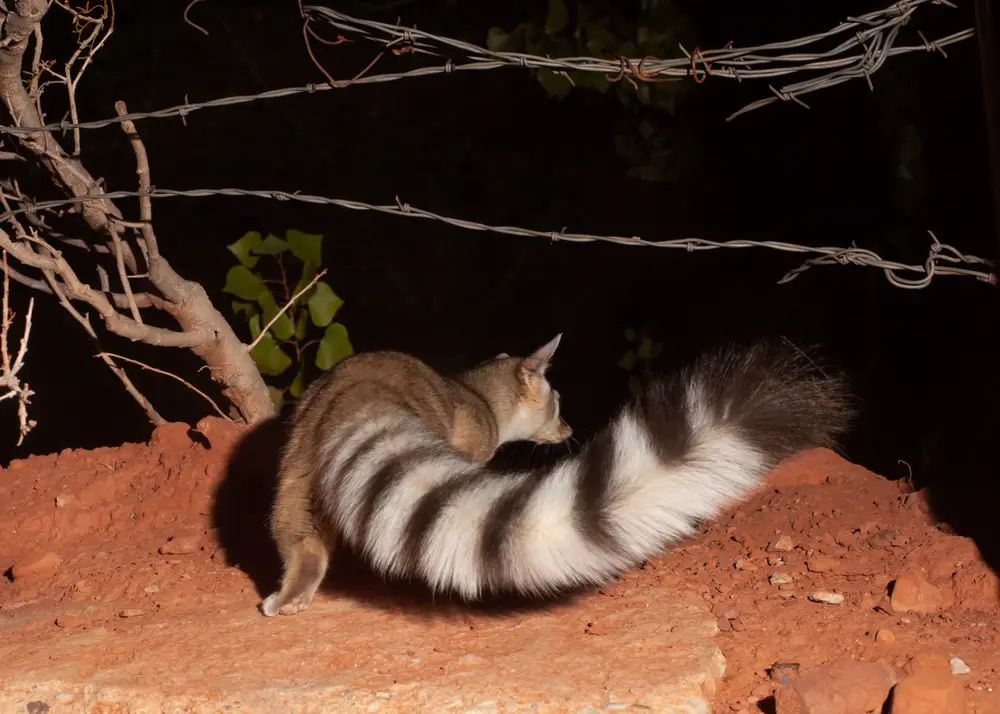
In the rocky canyons and arid landscapes of the southwestern United States, a creature with the grace of a cat and the curiosity of a raccoon makes its home—the ringtail. Despite their striking appearance, with long, bushy tails banded in black and white, ringtails are surprisingly adept at remaining unseen. These nocturnal animals are expert climbers, using their semi-retractable claws and agile bodies to navigate rocky terrain and tree branches with ease. Ringtails are omnivorous, feeding on a diet of insects, small mammals, fruits, and nuts, allowing them to thrive in diverse environments.
Ringtails are often associated with the mining history of the Southwest, where they were once kept by miners as “mousers.” Their ability to control rodent populations made them valuable companions in mining camps. Today, these agile creatures are protected by law, and their conservation is important for maintaining the ecological balance of their habitats. If you ever find yourself exploring the deserts and canyons of the Southwest, remember that the remarkable ringtail might be watching you from the shadows, its presence a testament to the region’s unique and diverse wildlife.
11. The Spectacular California Condor’s Mammalian Counterpart
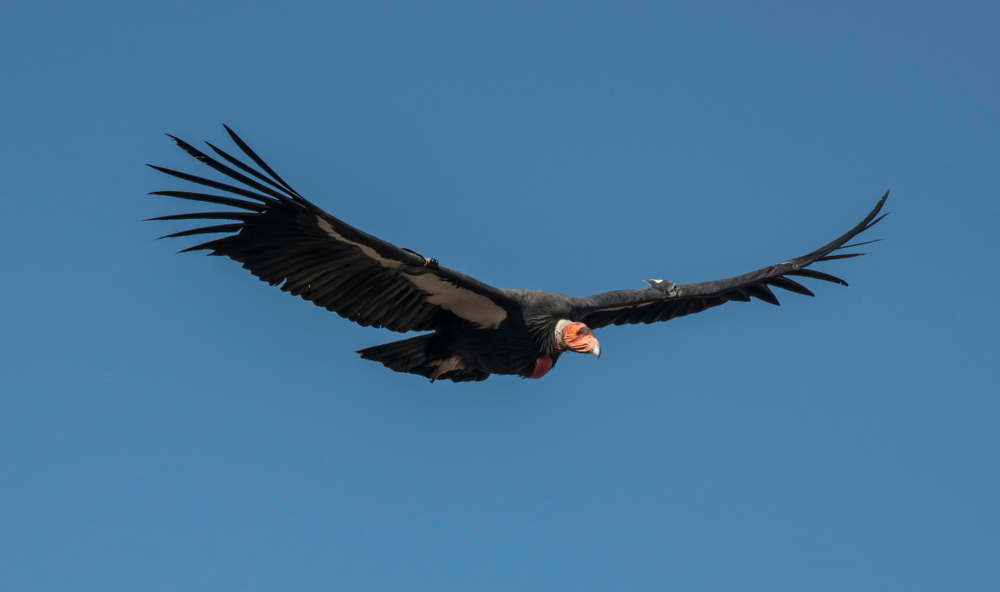
While the California condor is a well-known avian icon, its lesser-known mammalian counterpart shares the same rugged landscapes—the Channel Islands fox. Found only on the Channel Islands off the coast of Southern California, these tiny foxes are a unique subspecies, having evolved in isolation over thousands of years. With their small size and distinctive russet-colored fur, Channel Islands foxes are well-adapted to their insular environments. These charismatic creatures are omnivorous, feeding on a diet of fruits, insects, and small animals. Spotting one on the islands is a rare and special experience, showcasing nature’s adaptability and resilience.
The Channel Islands fox was once on the brink of extinction, with populations decimated by disease and predation from non-native species. Intensive conservation efforts, including captive breeding and habitat restoration, have helped bring these charming foxes back from the edge. Their recovery is considered one of the greatest conservation success stories in North America. Protecting the fragile ecosystems of the Channel Islands remains crucial for ensuring the continued survival of these unique mammals. So, if you ever venture to the Channel Islands, keep your camera ready—you might just encounter these living symbols of conservation success.
12. The Enigmatic Wolverine Of The North
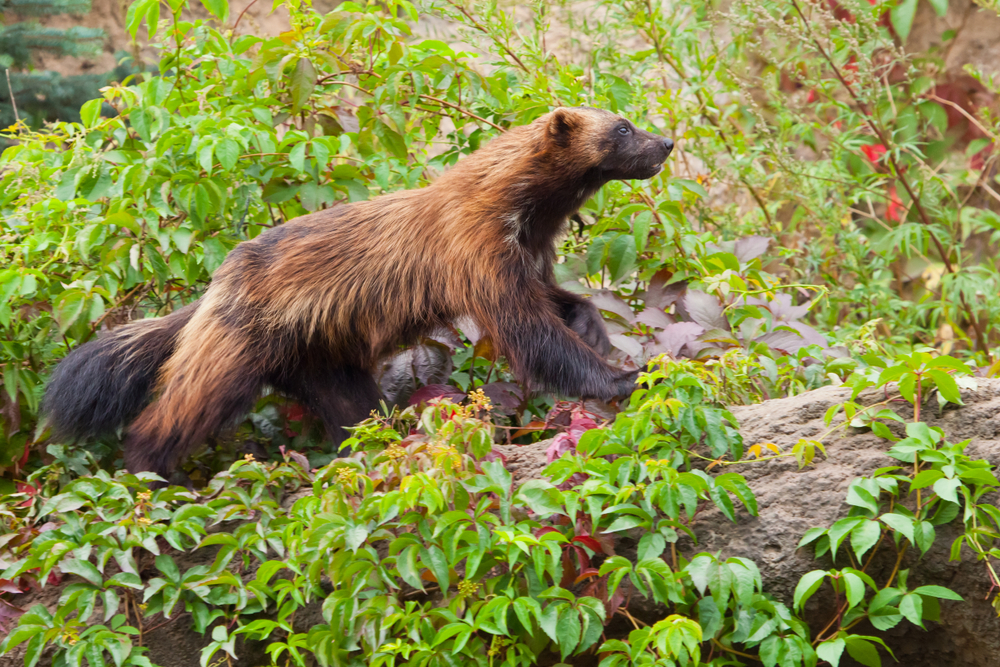
Roaming the remote wilderness from Alaska to the northern reaches of the Rockies, the wolverine is a creature shrouded in mystery and myth. Known for its fierce reputation and tenacious nature, this elusive carnivore is the largest member of the weasel family. With their powerful jaws and sharp claws, wolverines are skilled scavengers and hunters, capable of taking down prey much larger than themselves. Their thick fur and stocky build enable them to withstand harsh winter conditions, making them well-suited to their northern habitats.
Despite their formidable reputation, wolverines are highly sensitive to environmental changes and human disturbances. Their populations are declining due to habitat fragmentation, climate change, and competition with larger predators. Conservation efforts are vital to protect the vast, undisturbed landscapes that wolverines rely on for survival. These efforts focus on preserving large tracts of wilderness and reducing human impacts on their habitats. If you’re lucky enough to explore the wilds of the North, keep your eyes open for tracks or signs of the enigmatic wolverine—a symbol of the untamed, rugged beauty of North America’s wilderness.
